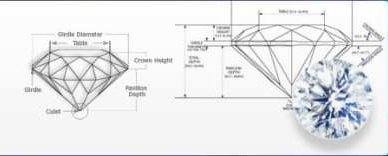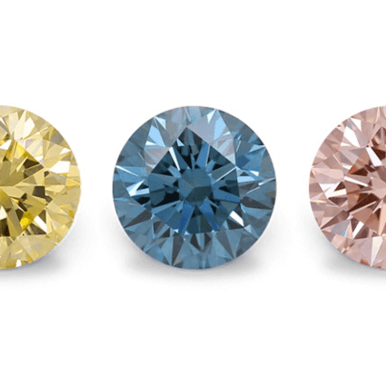SI1 Lab-Grown Diamond: The Complete Guide
The term "SI" stands for "Slightly Included," and the "1" indicates the first level of inclusion. In simple terms, these diamonds have imperfections that can be seen under a jeweler's loupe at 10x magnification. These imperfections are small flaws or marks within the diamond. SI1 clarity diamonds usually possess imperfections that are not visible to the naked eye.

SI1 Lab-Grown Diamond Pricing
The price of an SI1 diamond varies according to the type and location of its inclusions. When buying stones with lower clarity ratings, it’s important for buyers to be careful because inclusions might be more obvious than they might think.
The SI1 Diamond Shape's Role
When dealing with lab-grown diamonds graded as VS2 or lower, paying close attention to the comments section of the grading report is crucial. Sometimes, even if the inclusion plot looks relatively clean, the comments may contain a note like "clarity grade based on clouds not shown." Clouds, when they are abundant and dense enough, can cause a diamond to appear hazy and lackluster. This specific comment in the report should be seen as a warning sign of potential transparency issues. To learn more about cloudy diamonds, you can refer to our comprehensive guide. It's advisable to have an expert conduct a thorough inspection in such cases.
In fact, some VS2 clarity diamonds are eye-clean, meaning that they have no visible imperfections to the naked eye.
Diamond Color Grade for SI1 Clarity
Shoppers seeking SI1 stones often prioritize value over extreme color grades. High-cost color grades like D diamonds are usually avoided in favor of more affordable yet visually appealing options such as G color, H color, or F color.
The Difference Between SI1 and VS2 Lab-Grown Diamonds
The distinction between SI1 and VS2 lab-grown diamonds lies in the fact that SI1 diamonds tend to exhibit more prominent inclusions compared to their VS2 counterparts. Nevertheless, there are situations where opting for an SI1 diamond may prove to be a superior choice to selecting a VS2 diamond. This could be attributed to the inclusions being less conspicuous or strategically located in a manner that is concealed by your setting or the prongs securing the stone. Ultimately, the decision between these two grades hinges on the distinctive characteristics of the specific diamond under consideration.
Furthermore, even within these grading categories, diamond prices can exhibit substantial variation. Favoring an SI1 diamond over a VS2 diamond has the potential to yield savings ranging from 5 to 10 percent of the total cost.
What to Keep in Mind When Choosing an SI1 Diamond?
When seeking an SI1 lab diamond, it's essential to avoid stones with a cloud or a single, prominent inclusion. In the SI1 range, various types of inclusions may be present. Diamonds graded with a cloud are more likely to appear hazy or milky due to large clusters of pinpoints that obscure the diamond's brilliance. These cloudy inclusions restrict the passage of light, resulting in a less vibrant appearance. While SI1 diamonds with cloud inclusions may come at a lower price, it's wise not to base your choice solely on price. Additionally, GIA grading reports may not always explicitly mention the presence of a cloud on the stone, making it seem entirely clear, even if it isn't.
Another factor to be cautious of is a single, substantial inclusion like a crystal. Crystals, which form naturally during the diamond's growth, are often black in color and visible in white light. Such dark crystals can catch the eye without the need for magnification, potentially diminishing the overall appeal of the diamond.

Is SI1 Diamon a Good Choice?
There are different types of SI1 diamonds. Some are "eye clean" and have dark spots hidden under a prong in your engagement ring. Others are 'non-eye clean' and have dark spots that are obvious.
Furthermore, price disparities within the SI1 category can be quite substantial. Knowing these variations is crucial when using our diamond estimations. In a recent study, we found that 1-carat round H color SI1 clarity diamonds exhibited a price range fluctuating by up to 20%.
So, figuring out if a SI1 diamond is worth its price involves many different factors. The issue is dependent on the type and location of inclusions, as well as a plethora of other factors. It's important to note that VS2 stones may be cheaper than SI2 diamonds.
It's noteworthy that SI1 diamonds often fall within the range recommended by jewelers for their clients. This range usually ranges from SI1 to VS1 because the imperfections are often too small to be seen by the human eye.





















